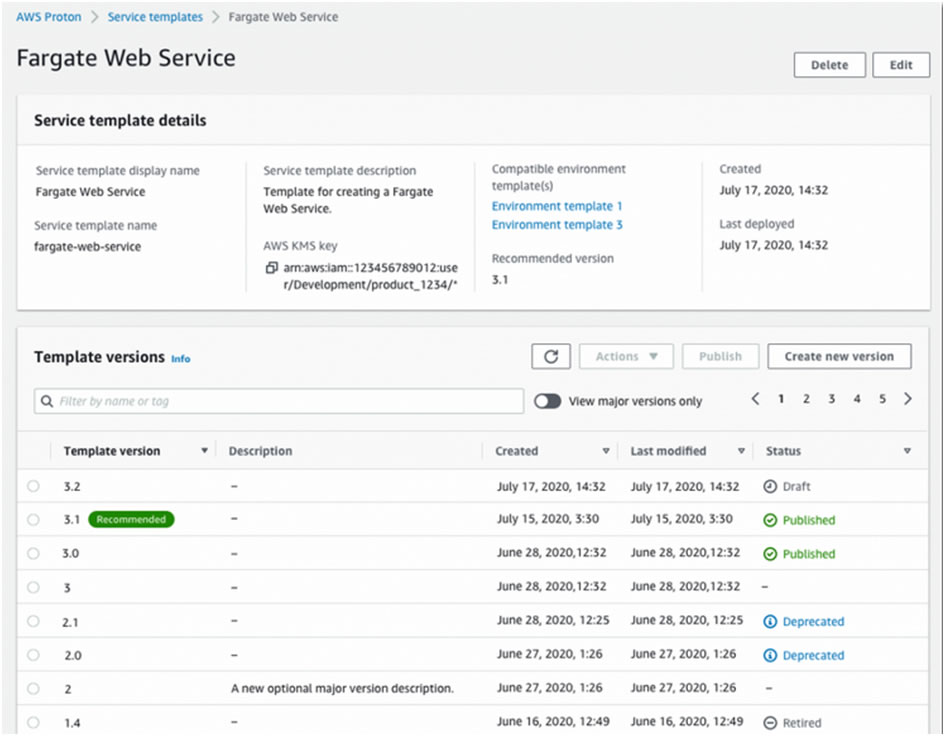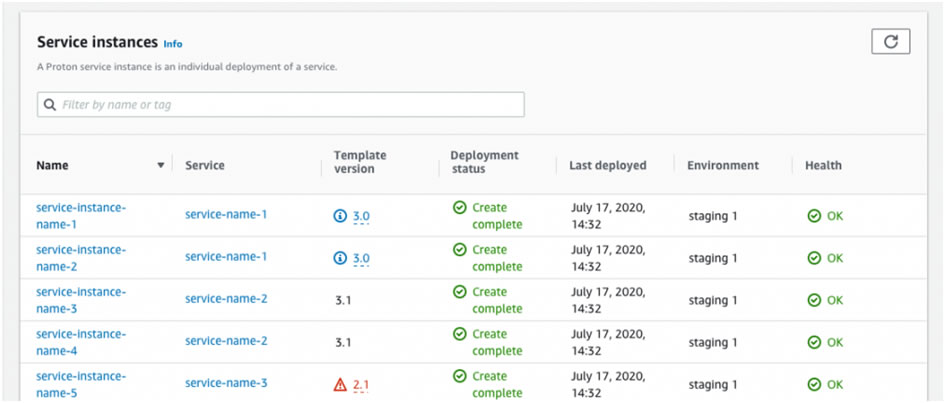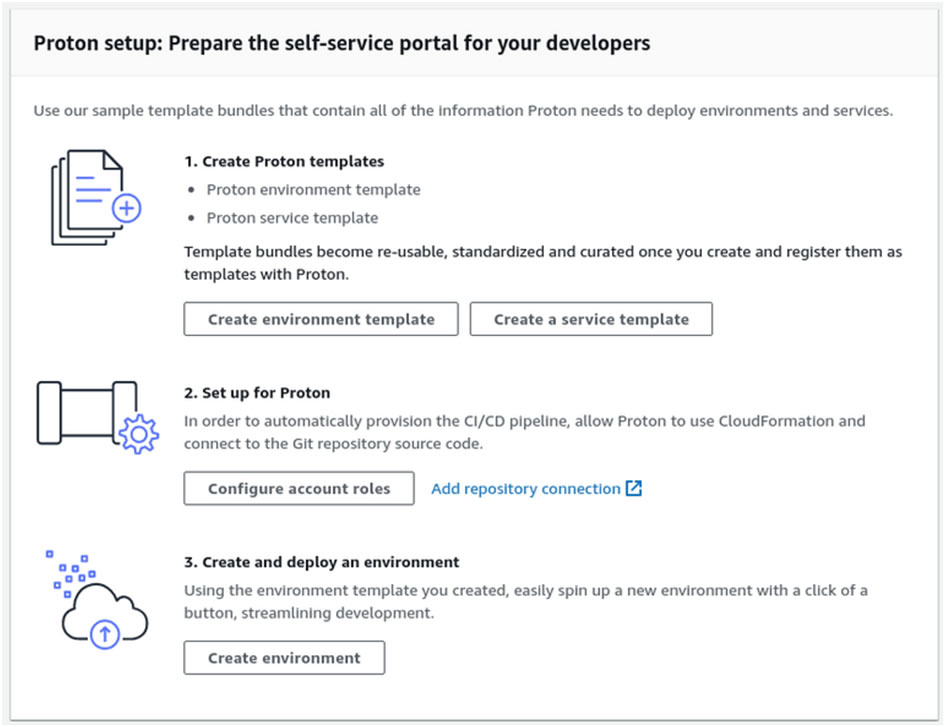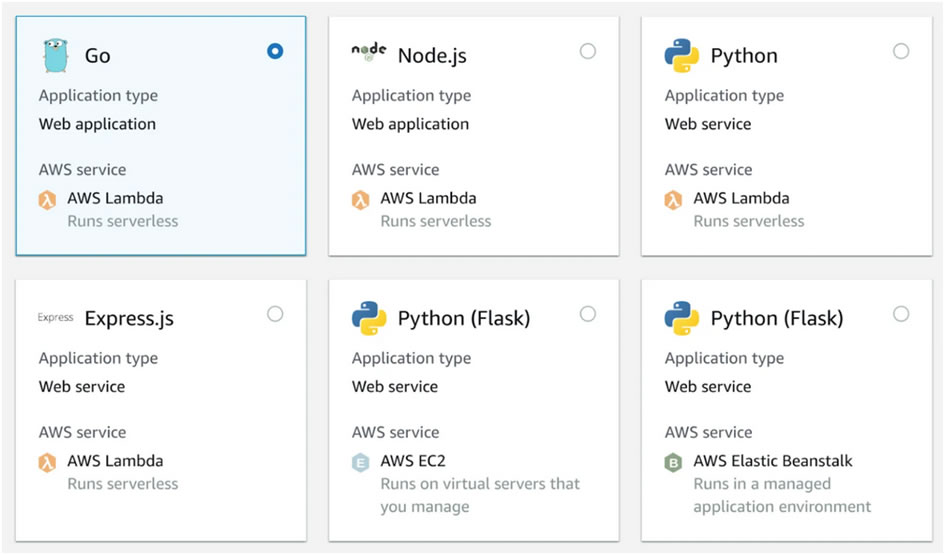AWS Proton, a new fully-managed deployment service for container and serverless applications, was unveiled at the annual “AWS re: Invent developer conference”. Customers will use AWS Proton to simplify and handle serverless and container-based application infrastructure provisioning and code deployments. The blog discusses the public preview of AWS Proton, how it works, what are its concepts, which teams can adopt AWS Proton, comparison with AWS Services, distinguishing Proton with Cloud Formation and CodeStar. Get this AWS DevOps Course that would assist you in upgrading your skills on AWS to align your knowledge with the trending professional career.
The Proton app release aims to provide consumers a single location to manage their Amazon Elastic Kubernetes Service (EKS), CodeDeploy, CloudFormation, and Lambda properties, as well as monitor infrastructure status and deliver technology upgrades. The service will be used by an AWS platform team to allow developer teams to deploy code using containers and serverless technologies while also providing the management tools, governance, and visibility needed to ensure consistent standards and best practices.
In an AWS news blog post, Alex Casalboni, a developer supporter at AWS, discusses how Proton works:
“The approach of constructing a service template requires cloud infrastructure, continuous delivery (CI/CD) pipelines, continuous integration, and observability features. Common CI/CD pipelines and observability tools like CodePipeline and CloudWatch will be compliant with AWS Proton. It also provides AWS best practices-compliant models for different usage cases, such as web servers based on AWS Fargate or stream processing applications built on AWS Lambda.”
Source: https://aws.amazon.com/proton/
The AWS management dashboard allows infrastructure teams to visualize and track the catalog of service models. When service models have been established, developers may use self-service to pick and deploy services.
On a Hacker News forum about AWS Proton, a user stated:
“Overall, Proton tends to be a good match for Application Catalog (admin-curated CloudFormation stack models for self-service implementation by developers), but it provides a more controlled, opinionated workflow with a standard Environment stack and a different CI/CD pipeline stack for each process. Standardizing a few of these components, which are popular in CloudFormation-managed CI/CD pipelines for self-service application creation, appears to be a worthwhile effort.”
Indeed, according to Holger Mueller, principal analyst and vice president of Constellation Research Inc.,
“In recent years, container-based and serverless technologies have grown considerably. As a result, some scaling challenges must be addressed, one of which is handling container images and tracking their deployments. When it comes to container files, enterprises need to know when and how to mount them, and AWS Proton is designed to help them do just that with AWS containers and serverless workloads.”
Customers will use AWS Proton for free in a few AWS Regions: US East (N. Virginia), US East (Ohio), US West (Oregon), Asia Pacific (Tokyo), and Europe (Ireland), and then pay for the underlying facilities and infrastructure. The paper landing page also contains information about the program.
AWS Proton: A Public Preview
AWS Proton, a new service that lets you simplify and control infrastructure provisioning and technology implementations for serverless and container-based applications, is now available in public preview.
Also, the most competent teams would find running hundreds – or even thousands – of microservices with continuously evolving infrastructure capabilities and configurations a daunting challenge.
AWS Proton supports infrastructure teams in defining and making traditional prototypes available to their organization’s developers. Infrastructure teams can now maintain and upgrade infrastructure without interfering with developer efficiency.
Working of AWS Proton
The method of creating a service template entails the development of cloud services, CI/CD pipelines, and observability software. AWS Proton would be compatible with popular CI/CD pipelines and observability tools like CodePipeline and CloudWatch. It also provides curated models that implement AWS best practices for typical use cases, such as web servers running on AWS Fargate or stream processing applications built on AWS Lambda.
The AWS Management Console helps technology teams to visualize and monitor the list of service templates.
This is a screenshot of the template list.

AWS Proton also gathers data on the app’s deployment status like the most recent successful release date. When a template is updated, AWS Proton detects existing systems that are already using the old version and helps infrastructure teams to convert them to the most recent version while monitoring server health and allowing the change to be rolled back if problems arise.
This is an example of a service template, along with versions and active instances.

Developers can self-service select and deploy resources once service models have been identified. Provisioning cloud services, installing the technology, and health tracking will be handled by AWS Proton, which will also provide insight into the state of all installed systems and their pipelines.
Developers should concentrate on writing and shipping serverless and container-based application code instead of learning, configuring, and maintaining the underlying resources.
This is the list of services that have been deployed.
Availability of Preview
The preview version of AWS Proton is now available in US East (Ohio), Asia Pacific (Tokyo), US East (N. Virginia), US West (Oregon), and Europe (Ireland); It is completely free and you only have to pay for the underlying programs and resources. Examine the technical documentation.
Concepts of Proton
On AWS, Proton can be used to build an internal self-service platform that is entirely customized to your needs. Software developers can use Proton to build models for applications and ecosystems, making it easier to install and validate the product. Each service blueprint can be used in different environments to create applications that are simple and secure to deploy.
The framework and any external facilities provided by the application, such as CI/CD pipelines, can be used in operation models. This means that Proton can completely simplify end-to-end server implementations, including databases and load balancers.
AWS Proton is better suited for which types of teams?
If your business is big enough to have a staff that can build and manage models, or if you have a variety of resources that can be templated, it’s better to use Proton for your services. If your company has tens or hundreds of related applications that often overlap effort to build networks or implementation pipelines, Proton could save you a lot of time while still ensuring that the standards are accurate and up to date.
The central team will build stacks and upgrade them on behalf of the implementation teams because Proton can be handled by a single team and used by several production teams. As a result, application teams will concentrate on designing their applications while the centralized staff ensures that the organization’s technology is up to date and follows best practices.
Models are included in Proton samples, making it easy for the management team to see which version is being used by other programs and in which environments. To ensure compliance, platform teams will upgrade stacks on behalf of framework teams.
Application developers will be able to fill in the requisite information, add their code repository from GitHub or Bitbucket, and deploy with minimal effort using pre-configured service models and environments.
What does Proton have in comparison with other AWS services?
Service Catalog vs. Proton
AWS Service Catalog might be acquainted with some of you. Central IT teams will use the Service Catalog to identify supported AWS resources that can be deployed and used for the application. This differs from Proton in that Proton allows you to specify a full template of resources for deploying an entire application stack into an environment.
In reality, Service Catalog-provisioned items can be used within Proton stacks! If the database team develops Amazon Relational Database Service (RDS) items in Service Catalog, the platform team will use such RDS instances as part of their rollout to deliver to web developers.
The most significant distinction between Proton and Service Catalog is that anytime an RDS product needs modifications, the platform team will automatically send them to the implementation team. The database team does not have complete access to the Service Catalog deployed objects. The database team will continue to work with the application team to ensure that the Service Catalog program updates are deployed.
Since the platform team will decide just how the services can be deployed, being able to completely define a stack improves developer efficiency. If the VPC and availability zone are specified in the service prototype, the application developer does not need to select them.
Proton vs CloudFormation
The discrepancies between Proton and AWS CloudFormation can surprise others. While both can be used as code for templated infrastructure, Proton has a few key differences that users should be aware of.
The first distinction is that Proton offers a self-service web interface from which users can quickly explore and deploy new models directly from the AWS console.
The ownership model of Proton, which we discussed earlier, is the second. Since Proton maintains control of the stacks, users who install services and environments do not need IAM authorization. This makes it easier to assign user privileges and manage stack changes.
The third difference is that Proton can be used as a generic templating motor. In addition to CloudFormation, other technology as code template options will be available, such as HashiCorp Terraform and AWS CDK.
Proton vs CodeStar
When a developer uses a service example, a CI/CD pipeline for their software is created automatically. This role is the same as AWS CodeStar. CodeStar helps you to select a framework type and have an opinionated build pipeline without having to customize anything from scratch.
Proton will also provide you with an expert CI/CD pipeline based on the platform team’s service template. Environment models enable teams and reuse pipelines to install the same framework into a construction, staging, or manufacturing environment, which is one of Proton’s advantages.
We have now finished our study on the public preview of AWS Proton, we had gone through the summary of the topics that covered the concepts such as how proton works, the proton concepts, different types of teams who can adopt AWS Proton, comparison with AWS Services, distinguishing Proton with Cloud Formation and CodeStar.





